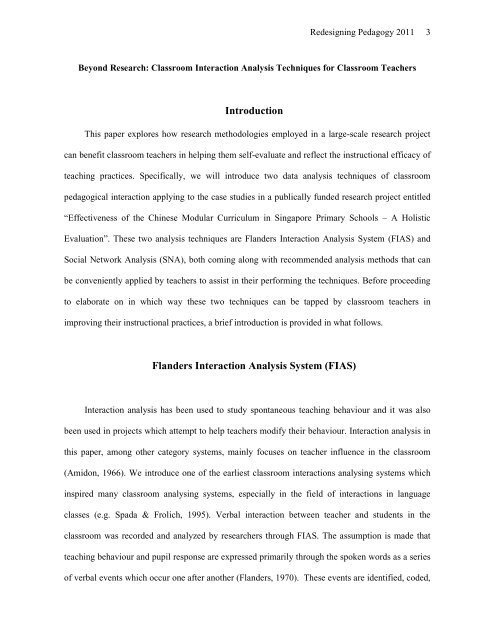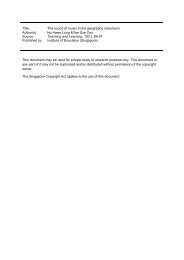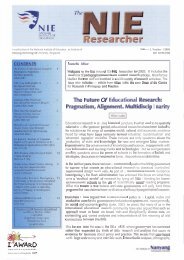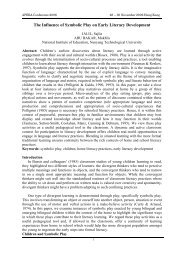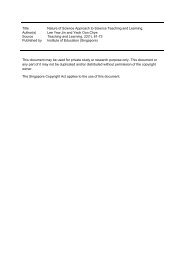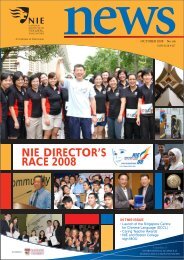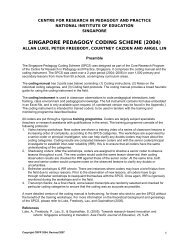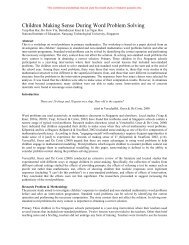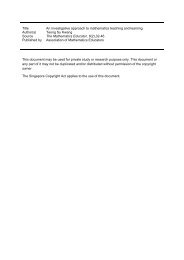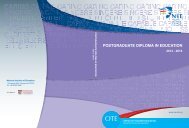Classroom interaction analysis techniques for classroom teachers ...
Classroom interaction analysis techniques for classroom teachers ...
Classroom interaction analysis techniques for classroom teachers ...
You also want an ePaper? Increase the reach of your titles
YUMPU automatically turns print PDFs into web optimized ePapers that Google loves.
Redesigning Pedagogy 2011 3Beyond Research: <strong>Classroom</strong> Interaction Analysis Techniques <strong>for</strong> <strong>Classroom</strong> TeachersIntroductionThis paper explores how research methodologies employed in a large-scale research projectcan benefit <strong>classroom</strong> <strong>teachers</strong> in helping them self-evaluate and reflect the instructional efficacy ofteaching practices. Specifically, we will introduce two data <strong>analysis</strong> <strong>techniques</strong> of <strong>classroom</strong>pedagogical <strong>interaction</strong> applying to the case studies in a publically funded research project entitled“Effectiveness of the Chinese Modular Curriculum in Singapore Primary Schools – A HolisticEvaluation”. These two <strong>analysis</strong> <strong>techniques</strong> are Flanders Interaction Analysis System (FIAS) andSocial Network Analysis (SNA), both coming along with recommended <strong>analysis</strong> methods that canbe conveniently applied by <strong>teachers</strong> to assist in their per<strong>for</strong>ming the <strong>techniques</strong>. Be<strong>for</strong>e proceedingto elaborate on in which way these two <strong>techniques</strong> can be tapped by <strong>classroom</strong> <strong>teachers</strong> inimproving their instructional practices, a brief introduction is provided in what follows.Flanders Interaction Analysis System (FIAS)Interaction <strong>analysis</strong> has been used to study spontaneous teaching behaviour and it was alsobeen used in projects which attempt to help <strong>teachers</strong> modify their behaviour. Interaction <strong>analysis</strong> inthis paper, among other category systems, mainly focuses on teacher influence in the <strong>classroom</strong>(Amidon, 1966). We introduce one of the earliest <strong>classroom</strong> <strong>interaction</strong>s analysing systems whichinspired many <strong>classroom</strong> analysing systems, especially in the field of <strong>interaction</strong>s in languageclasses (e.g. Spada & Frolich, 1995). Verbal <strong>interaction</strong> between teacher and students in the<strong>classroom</strong> was recorded and analyzed by researchers through FIAS. The assumption is made thatteaching behaviour and pupil response are expressed primarily through the spoken words as a seriesof verbal events which occur one after another (Flanders, 1970). These events are identified, coded,


